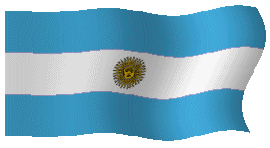
B"H
Jewish  Tours
Tours
 Buenos Aires, Argentina
Buenos Aires, Argentina
ARGENTINA, South American Federal Republic, general population (2004) 39,150,000; Jewish population 190,000.
The foundations of contemporary Jewish life in Argentina were laid by immigrants from Western Europe. Some arrived in the 1840s, but the earliest recorded evidence of organized Jewish life was the first Jewish wedding, performed in 1860. A minyan that met for the High Holidays in 1862 developed into the Congregación Israelita de la República Argentina (CIRA) in 1868, concerned exclusively with serving the Buenos Aires community in matters such as marriage, burial in the cemetery of the dissidents, and, from 1874, circumcision. A permit to keep an official register of Jewish births, marriages, and deaths was at first denied to the president of the CIRA, Segismundo Auerbach (1877), under the pretext that this function was restricted to the clergy of each faith. Only when Henry Joseph (an intermarried English businessman who had some Jewish knowledge) was elected by the CIRA to serve as its rabbi and confirmed by the chief rabbi of the French Consistory in 1883 was the permit granted to the community.
The first Sephardim settled in Argentina in the early 1880s. They came from the northwestern coast of Morocco, mostly from Tetuán and Tangier, and in 1889 applied for permission to establish a synagogue according to the Hispanic-Portuguese rite. Many of the Moroccan Jews had formerly settled in Brazil, and upon their arrival in Argentina dispersed in the hinterland, forming chains of commercial enterprises, with branches in the main provincial cities.
Pogroms in Russia in 1881 led to the appointment of a government ad honorem immigration agent in Odessa to attract Russian Jewish immigrants. This decision prompted a vehement antisemitic attack in the press, which was boldly rejected by the leaders of the Jewish community. French antisemitism also influenced Julián Martel, who wrote La Bolsa (1891), a novel in which several antisemitic passages are taken almost verbatim from Edouard *Drumont 's La France Juive (1886). Originally published by the influential newspaper La Nación, La Bolsa has been reedited and reprinted repeatedly until the present day and still serves widely as an historical source for the period. Although the 1887 census of Buenos Aires revealed only 366 Jews, it is believed that by 1889 between 1,500 and 2,000 Jews were living in the Argentine Republic.
[Victor A. Mirelman]
|
Visite nuestro sitio/Visit our home page: |